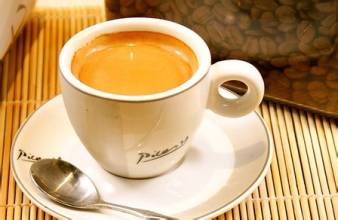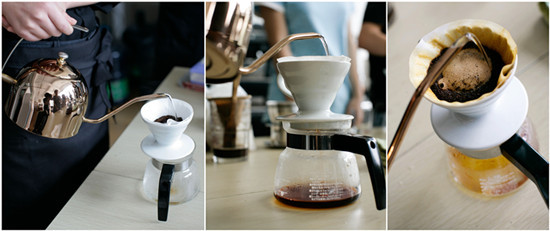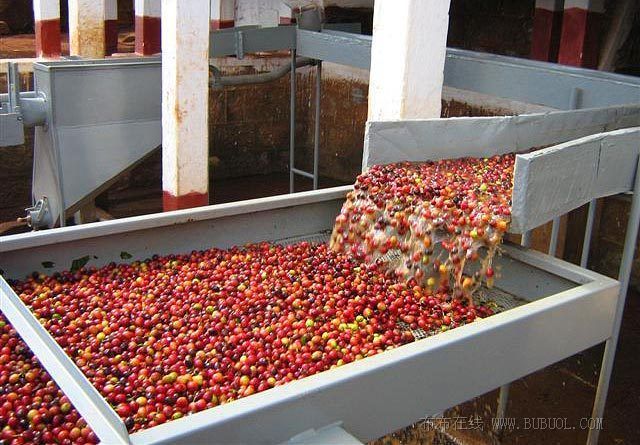The introduction of coffee flavor terms teaches you how to taste good coffee and express its flavor.

Flavor [flavor]
It is the overall impression of aroma, acidity and mellowness, which can be used to describe the overall feeling of contrasting coffee.
Acidity [acidity]
It is the sour and strong quality of all the coffee grown on the plateau. Unlike bitterness or sour (sour), it has nothing to do with pH, but a refreshing and lively quality that promotes coffee to exert its functions of boosting the mind and clearing the taste.
Body [alcohol]
After drinking the coffee after conditioning, the taste of the coffee is left on the tongue. The change of mellowness can be as light as water to light, medium, high, fat, and even some Indonesian coffee is as thick as syrup.
Aroma [smell]
Aroma refers to the smell and aroma of coffee after conditioning. Bouquet is a less commonly used word that specifically refers to the taste of ground coffee powder. Aroma is usually specific and comprehensive. The words used to describe Aroma include: caramel, carbon roasted, chocolate, fruit, grass, malt, rich, rich, spicy and so on.
Bitter [bitter]
Bitterness is a basic sense of taste, and the sensory area is distributed at the base of the tongue. The bitterness of dark baking is deliberately created, but the most common cause of bitterness is too much coffee powder and too little water. Bitterness is not a consent word for sour.
Bland [light]
Coffee grown in the lowlands is usually quite light and tasteless. Coffee with insufficient powdered coffee and too much water will have the same light effect.
Briny [salty]
After brewing, if the coffee is overheated, it will produce a salty taste. The coffee in some coffee shops has this taste.
Earthy [aroma of soil]
Commonly used to describe Indonesian coffee with a spicy and earthy flavor. But the smell of mud does not refer to the smell of dirt on coffee beans. Some commercial coffees are mixed with cheap coffee, and the muddy smell may become dirty, apparently due to the dry, rough processing technology of laying coffee beans on the ground.
Exotic [uniqueness]
Describe coffee with its unique aroma and special flavor, such as flowers, fruits and spices. Coffee from East Africa and Indonesia usually has this property.
Mellow [aromatic alcohol]
It is an adjective for coffee with low to medium acidity and good balance.
Mild [mild]
It means that some kind of coffee has a harmonious and delicate flavor. Latin American premium coffee grown on the plateau is usually described as mild in texture. In addition, it is also a coffee term used to refer to all plateau coffee except those produced in Brazil.
Soft [soft]
Describe low-acidity coffee like Indonesian coffee; it can also be described as mellow or sweet.
Sour [acid]
A sense of taste in which the sensory area is mainly located at the back of the tongue and is characteristic of light-colored roasted coffee.
Spicy [Xiangxin]
Of a flavor or smell reminiscent of a particular spice. Some Indonesian plateau coffee (especially old coffee) contains the sweet smell of cardamom.
Strong [strong]
Technically, it describes the advantages and disadvantages of various tastes, or the relative ratio of coffee to water in a particular conditioned product. In terms of popular usage, strong describes the strong flavor of dark roasted coffee. In addition, it also misleads people into the illusion that it contains a lot of caffeine. In fact, canned light coffee is high in caffeine because it contains more decaf.
Sweet [sweet]
It is a widely used adjective, which is almost like fruit in nature and has something to do with the taste of wine. Coffee grown on the Costa Rican plateau usually has a pungent flavor.
Wild [wild]
Describe coffee as having extreme taste characteristics. If ordinary people cannot accept it, they will call it eccentric, but it may also be an attractive feature, depending on personal preference.
Winy [wine flavor]
Describe a charming flavor reminiscent of wine. Fruit-like acidity and smooth mellowness create a special contrast flavor.
Source:
Blog of Fujian Damei Coffee
Important Notice :
前街咖啡 FrontStreet Coffee has moved to new addredd:
FrontStreet Coffee Address: 315,Donghua East Road,GuangZhou
Tel:020 38364473
- Prev

Water temperature selection of filter paper dripping hand-washing method to master the skills of influencing the quality of hand-brewed coffee
Filter paper drip type hand flushing method, its water temperature can reach the taste balance in 82C~84C. Exceeding this temperature will make some flavors particularly obvious, and if you don't reach this temperature, you won't be able to extract enough delicious ingredients. The effect of water temperature on taste the water temperature above 88C is too high, it is easy to produce air bubbles, resulting in incomplete steaming. 88C~84C (suitable for deep and moderate baking) has a strong taste and a bitter taste.
- Next

The treatment method of Coffee Fruit-- the introduction of Water washing method and the difference between Water washing method and Solar method
When the coffee fruit is harvested from the mountain, the next step is to remove the peel and pulp of the coffee beans. There are two main ways of treatment: washing and solarization. But the ultimate determining factor is whether there is enough water to use. Some special boutique coffees are both insolated and washed. Washing requires the use of special machinery and equipment and adequate water sources.
Related
- What is the meaning of lactic acid fermentation with coffee bean treatment?
- How to judge the state of foam by sound?
- How does the latte pull out the unicorn pattern? Come to get for a little trick to improve the flower pull!
- Will flower pulling affect the taste of the latte?
- Do you know the history of coffee?
- The difference between honey treatment and sun washing what is raisin honey treatment?
- What kind of milk can a novice use to make coffee foam to keep the foam longer? The correct method and skills of milking tutorial sharing
- Why do washed coffee beans taste sour? Flavor characteristics of washed Coffee
- Introduction to the skill of how to practice the size and height of water injection around the circle of hand-brewed coffee
- How do beginners practice coffee flower drawing from scratch?

